A laser marking machine, utilized for etching, engraving, and marking various materials, is composed of several essential components. This article provides an overview of the key components and accessories that comprise a laser marking machine, including its different types and applications.
Introduction to Laser Marking Machines
A laser marking machine is a versatile device that employs laser beams to create markings on a wide range of materials. These markings are produced by vaporizing the surface material, revealing the underlying layers and resulting in intricate patterns, logos, and text. Laser marking machines are categorized into several types, including CO2 laser marking machines, semiconductor laser marking machines, fiber laser marking machines, and YAG laser marking machines. They find applications in diverse industries, such as electronics, integrated circuits (IC), telecommunications, hardware manufacturing, jewelry, automotive components, and more.
Types of Laser Marking Machines
The market primarily features CO2 and YAG laser marking machines, with semiconductor laser marking machines gradually replacing YAG models. Additionally, advanced options like end-pumped laser markers, fiber laser markers, and ultraviolet (UV) laser markers cater to specific requirements.
Advantages of Fiber Laser Marking Machines
Fiber laser marking machines are gaining popularity, especially in the electronics industry, owing to their integrated design, compact size, low power consumption, extended lifespan, high efficiency, and minimal maintenance requirements. These machines produce high-quality laser beams with precise spot sizes, making them ideal for various applications.
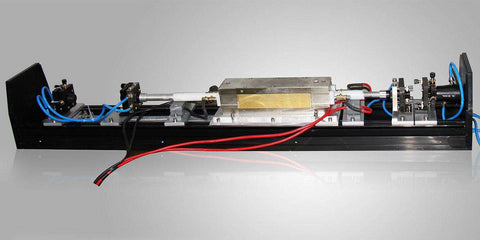
A laser marking machine comprises several core components and accessories, including:
(Link:https://startnow-store.com/collections/marking-machine-parts)
1. Galvo Scanner System
The galvo scanner system, also known as a galvanometer scanner, plays a crucial role in precisely controlling the laser beam's position and movement. It consists of two mirrors, the X-mirror and Y-mirror, responsible for directing the laser beam to specific locations on the workpiece. Modern fiber laser marking machines typically incorporate digital galvo scanners with a spot size typically around 10mm.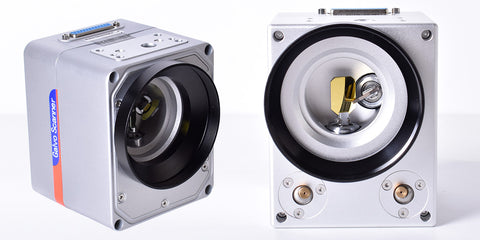
2. F-theta Scan Lens
The F-theta scan lens, also called a flat field focusing lens, is essential for focusing the laser beam onto a flat plane. It ensures consistent and accurate laser marking by converging the beam precisely on the workpiece surface.


3. Laser Locator (Laser Pointer)
Laser locators, emitting visible red or green light, guide the laser beam's path. Since the 1064nm laser beam is invisible, these locators align visible laser light (typically at 650nm) with the invisible laser beam, enabling operators to visualize the marking path accurately.
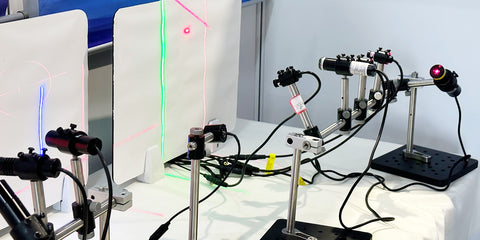
4. Laser Xenon Lamp and Laser Krypton Lamp
Laser xenon lamps and laser krypton lamps serve as light sources for various laser equipment. They emit intense light pulses used in applications such as laser welding, spectroscopy, and powering solid-state lasers. Laser xenon lamps are typically employed in pulsed applications, while laser krypton lamps provide continuous illumination for solid-state lasers.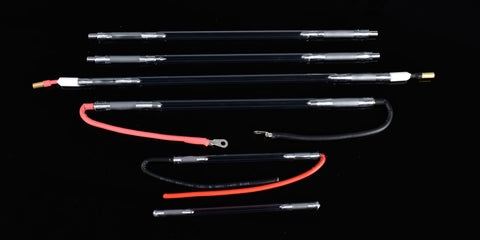
The notation "8X125X270" refers to the specifications of these lamps, where "8" represents the outer diameter, "125" represents the arc length, and "270" represents the total length of the lamp.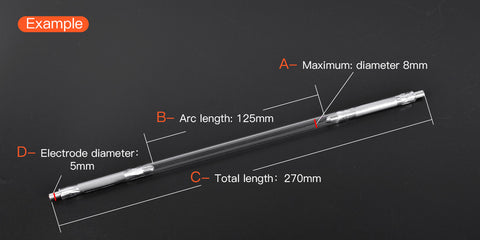
In the event of lamp replacement, the following steps are recommended:
Close the water cooling system and the laser power supply, open the upper three-panel cover, remove the lamp or crystal to be replaced, install the new lamp or crystal, and adjust the laser power supply current to around (15~20) A. Place a small piece of wood or black paper between the front membrane and the beam expander to observe the laser's burning pattern.
If the pattern is not visible, make slight adjustments to the three knobs on the front membrane holder until the pattern becomes visible. Finally, turn off the laser power supply.
It's important to note that if a krypton lamp needs replacement, do so when the current value is adjusted to 25A and the laser still cannot function properly.
Conclusion
In conclusion, a laser marking machine consists of essential components and accessories that contribute to its precise marking capabilities. When selecting a laser marking machine, it's essential to consider the specific requirements of your application to ensure optimal results. These versatile machines continue to play a significant role in a wide range of industries, enabling high-precision marking and engraving on various materials.

